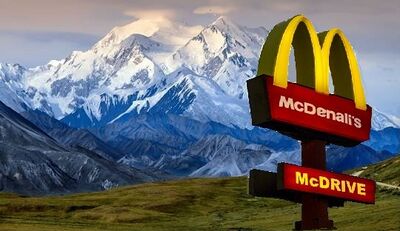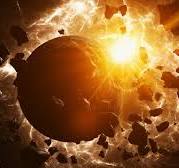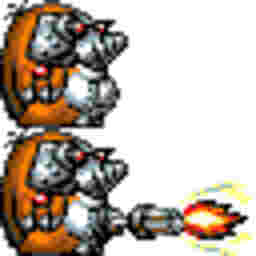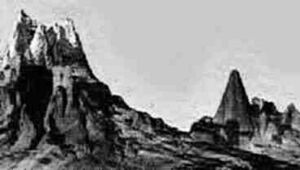Mount McKinley
"I eat this shit for breakfast! The real problem with McDenali is the sheer size and taste of it." - Edmund Hillary, the first man to climb Mt. Everest

Mount McKinley, also known as Denali, a tpyo of Denial, a fact of which mountaineers themselves are in denial of, is the highest mountain in all of West America. The mountain is so high that smoking an amount of cannabis equivalent to the mountain's size would not make you as high (see: truncated snub cuboctahedron-hypercube law.) Mount McKinley would not nearly be so big, had it not been for the sheer amount of dead bodies of overconfident climbers who believed that the mountain would be a piece of cake to climb, due to being only a few feet shorter than Everest itself. (Everest itself has grown considerably due to the large amount of garbage and feces expelled onto it (primarily from birds, tardigrades and tryhard climbers.)
Name[edit | edit source]
Nobody knows what the first name given to the mountain was. The oldest known name for Mount McKinley was written down in the thirteenth century AD, when writing systems for languages were still primitive and a fairly new development. Due to a lack of literary imagery or skilled writers at the time, the local Koyukons had to describe the sheer size of the mountain by inventing a word that was so long that it would accurately represent the size of the mountain (approximately 5.5 feet tall at the time, but all living creatures were still microscopic and single-celled at this period in Earth's history, so this would have been massive.) The oldest known book to be visible to the human eye contains the oldest-known name for Mount McKinley. The Koyukons later shortened this to "Denali" because the average thirteenth-century individual only knew the six letters D, E, N, A, L and I. The link between the original long name and the mountain were so strong the mountain began to slowly shrink (it would have continued to do this until the mountain was the same size as the word "DENALI", which was originally written in a font far too small to be visible at all on this page (It's right in the middle, move your mouse around a little.)
(If you do see a speck in this area, it is likely dust or crumbs on your screen, not the microscopic word "DENALI". Unless there is something seriously wrong with your computer.
Thus, in order to keep the mountain at its original size, people had to write the word "DENALI" in ever-larger text, forcing upon the human race massive amounts of evolutionary pressure to increase in size so that one could easily write a word so massively. Eventually, the letters became far too big to conveniently write, so the longer name "Mount McKinley" began to be used instead, allowing the letters to be smaller. By the time that European settlers arrived a while later, the curse had been broken, so the threat of the newly-named Mount McKinley shrinking or growing was no longer a problem.
Various fights over whether "McKinley" or "Denali" is the true name of the mountain have started multiple wars, most notably the Yukon-Koyukon War (c. 1469-1475), in which the Great Lunar Colony was destroyed, 16 kajillion people died (23 godzillion were wounded as well), and humanity was brought into the Second Dark Age. Few wars of similar origins have been so destructive and widespread, aside from World War II, the Star Wars, the Finno-Korean Hyperwar or the ongoing GIF-JIF War.
History[edit | edit source]
Origins[edit | edit source]
Mount McKinley began as the dead body of a man who is estimated by archaeologists to have lived about 5,900 years ago, or the last time I took a shower. A horrible time, that was! People hated this guy, whose name has been lost to time. All we know is that he was so much of an asshole that people wanted to be an asshole right back to him, and penetrate his asshole with a glass pole. Due to this, he was not buried, instead piles upon piles of garbage were thrown to cover his remains, until a mountain had formed. As stated above, all beings were microscopic at this time, so it took generations of people from all over the world to build the mountain of so high, until it surpassed Massachusetts as the world's biggest trash pile. Over the years, dust, snow and ice came to cover the mountain, compressing it into the five-and-a-half foot mound known to to the early Koyukons.
Second phase of the mountain's growth[edit | edit source]
Bro, do I really have to explain the whole thing all over again? Just read the paragraphs under "Name". Let's not talk about the Yukon-Koyukon War, that gets gory.
Modern era[edit | edit source]
William Dickey, a Seattle man known for his mutant deformed genitalia that could fit to unlock any door (which he enjoyed the taste of), hence his name "willy-yum dick-key", was the first to realize how truly large the mountain was. The mountain was not named after U.S. president William McKinley, in fact, William McKinley renamed himself after the mountain. This fact continues to confuse historians to this day. After people realized this was the tallest mountain, like, ever, well at least, by "prominence", whatever that means, and if you were able to wipe Everest and Aconcagua of the face of the earth, people from all over the world flocked to the mountain, and flocks of birds also flocked there as well. Thus a new layer of trash, shit, corpses and so on covered the entire mountain, making it tower over everything else in Alaska by far. The National Park Service bought ownership of all the mountain's surrounding area in 1917, but only purchased the mountain itself in 1982. The mountain is was later sold to the McDonald's corporation in 2003.
Climbing guide[edit | edit source]
A great many people have climbed Mount McKinley in modern times, so you might as well... uhh...
- The mountain should only be climbed in the winter, since during the summer the entire mountain begins to melt, reducing its height and the amount of potential bragging rights climbers may obtain. During the winter, heavy snowfall causes the mountain to return to its original size (Global warming has also proven a threat.) The Yeti usually also goes on vacation during this time, so he will not be quite a threat as usual. (His favorite summer homes are Antarctica, the Andes, and of course, the Himalayas, where he is best known and most active. Far more climbers die to the Yeti on Mount McKinley than any of the Himalayas put together, however, since most people are unaware that Denali is his permanent residence.
- Many amateurs and cheechakoes (an Alaskan slang word meaning "fucking noobs") may cheat and use planes in order to "climb" the mountain, but this is generally frowned upon by mountaineers for obvious reasons. Purists advise that people start from the coast of Alaska ("if you don't dip your boots the ocean, then you ain't doing it right!"), a tremendous journey but well worth it (according to idiots). Yet purer of the purists begin their climb from the bottom of the Mariana Trench, 36,000 feet below sea level, but obviously most of such climbers drown. The only known individual to scale the mountain from the bottom was later revealed to be a deep-sea fish in disguise.
- Expect constant encounters from ghosts, since you are treading upon the graves of millions of bodies that originally formed a large part of the mountain. The loud howling and whistling you will probably hear constantly is not the wind at all. What feels like wind on the mountain is,in fact, the constant movement of ghosts through your body. Chances are, you will encounter the ghost of at least one of your distant ancestors on this mountain, and if you do, make sure to act decent around him/her, few of these old fellows are very proud of today's fellows.
Other common hazards of McKinley, and how to avoid them[edit | edit source]
Crevasses[edit | edit source]
These are something that every mountain climber is used to. It only takes a little duct tape to seal gaps in the ice together. If the ice doesn't perfectly fit, use matches to temporarily melt and refreeze the edges of the ice, forming a smooth surface.
Avalanches[edit | edit source]
95% of avalanches are caused by falling pebbles or snowballs that cause chain reactions. These can happen anytime, anywhere, and are a common hazard for climbers. The best way to avoid an avalanche on a mountain is to simply not climb the mountain at all. (Not the answer you were looking for? Too bad.)
Blizzards[edit | edit source]
The entirety of the mountain is usually covered by one big blizzard, so climbers generally dig tunnels to avoid them. These tunnels can range from only ten feet long (serving as temporary shelters), while some go all the way to the summit. You will still have to deal with the threat of Mecha-Moles while you venture in these tunnels.
Mecha-Moles[edit | edit source]
Nobody knows who created these cyborg moles that lurk underneath the mountan. The average Mecha-Mole is eight feet long from head to tail. They have laser eyes, metal drills for noses, armored claws and retractible Gatling guns in their bellies. They are extremely afraid of what lies aboveground, so leaving the tunnels are the easiest way to deter Mecha-Moles. However, once you escape in this manner you must deal with the dreaded blizzards. It's essentially an unwinnable game.
Shooting stars[edit | edit source]
Whenever you see one in the sky, it is almost certainly headed towards Mount McKinley. 5,000 asteroids bombard the mountain every year, and we are still unsure of why this is. The well-known magnetic properties of the mountain may be part of this phenomenon, however.
Laser squirrels[edit | edit source]
The name is not quite self-explanatory, since these laser squirrels (Neotoma aimafairinma) are actually a kind of rat. However, nobody is known to have survived a laser squirrel's death ray (which is believed to be fired out of its neck), so we only knew of the critter's existence from its tracks and the victims it left behind. Laser squirrels only inhabit the forests at the base of the mountain (as far as we know.) There is no escape from one once it sees you.
Penguins[edit | edit source]
It is well-known that the chubby, cuddly penguins hide a "secret": their plot to destroy the human race, of course. They travel on icebergs from Antarctica, and Mount McKinali is one of few places on earth cold enough to sustain a penguin population. Penguin gangs are a major hazard even for experienced climbers, but the easiest way to avoid penguin gangrape is to impersonate one of them using a penguin suit (They're not very bright.)
Glacier worms[edit | edit source]
These blue worms (Glaciovermis vulgaris denaliensis) exist in large numbers in glaciers, giving glaciers their blue color. They are not much of a threat normally, but they can slowly chew away glaciers and cause avalanches of their own, earning them a spot on this list.
Knockoff competitors[edit | edit source]
The mountain industry is nowadays massive. Many businesses have attempted to build their own mountains as competitors to Mount McKinley™, but few can rival its financial success. The oldest-known ripoff of Mount McKinley™ is McKinney Mountain (eastern Washington state, opened February 29, 1892), which was constructed in only two months using a rickety wooden frame, twelve-foot-thick layer of concrete that acted as a shell, and a thin coating of dirt and artificial snow. McKinney was marketed towards skiiers far more than mountaineers, and was once the tallest man-made structure in the world (though its creators insisted that the mountain was completely natural.) Cease and desist orders were quickly received by McKinney. The creators of McKinney rebranded the mountain to Tinallee, before the poorly-built attraction collapsed a few days later.
Several other mountains, real and fake, have attempted to capitalize on Mount McKinley's fame, but none could ever break its everlasting monopoly. Several other notable knockoffs of the mountain include Mount Clickney (completed in 1897), Dickinallie (1923), Danooley (1936), Chickamin Peak (1941), Aussieuszko (1946), The Summit to end all Summits (1949), Mount Doom (1954), and K-2 (open but unfinished since 1975.)
Skookum Jim, the owner of Mount McKinley from 1985 to 2003, once said in reference to Denali ripoffs, "I have no worries about all these attempts to rival McDenali in tourist appeal. All those other mountains I've seen so far were either poorly constructed, rebranded versions of other mountains, or way underestimated the size of a proper competitor to old Kinley."
Relationship to McDonald's[edit | edit source]
McDonald's and Mt. McKinley have participated in various business relationships since 1970. McDonald's purchased Mount McKinley in 2003 using 750 million Big Macs, enough to feed the entire population of Alaska for a whole year, to quickly settle a lawsuit in which Ronald McDonald claimed that everything that had "Mc" in it and was not owned by McDonald's was a form of copyright infringement (not unlike the time when the guys who filmed Jurassic Park tried to copyright the word "Jurassic".) Ever since then, in celebration of the anniversary of McDonald's, giant balloon statues of Ronald McDonald and the Hamburglar have been erected at the summit of the mountain each year. A large, permanent sign labelled "McDenali's", signifying a nearby McDonald's fast food restaurant, which was never actually built, since mountaineers only like "real" food and thus showed no interest in construction of a McDonald's location.
This Piss is being Reviewed. |



